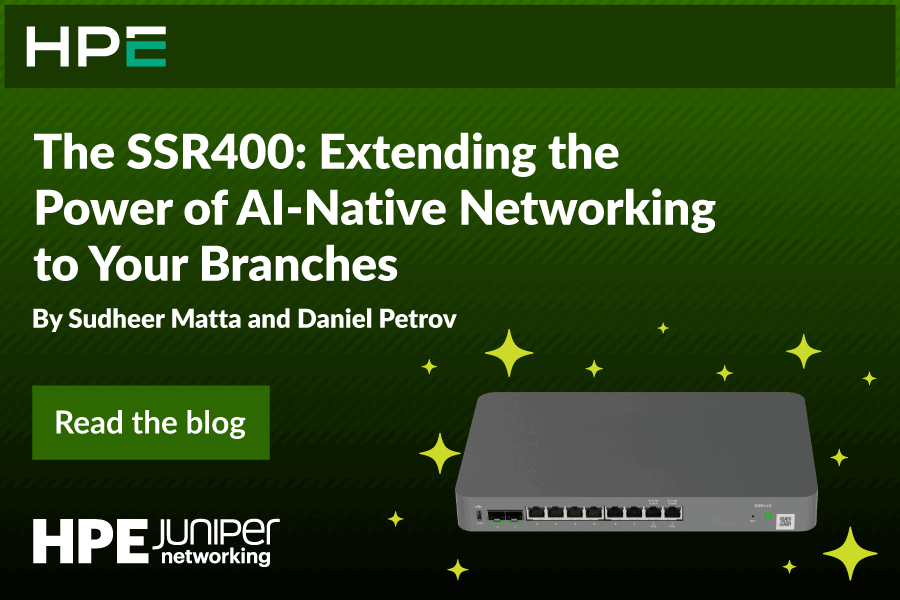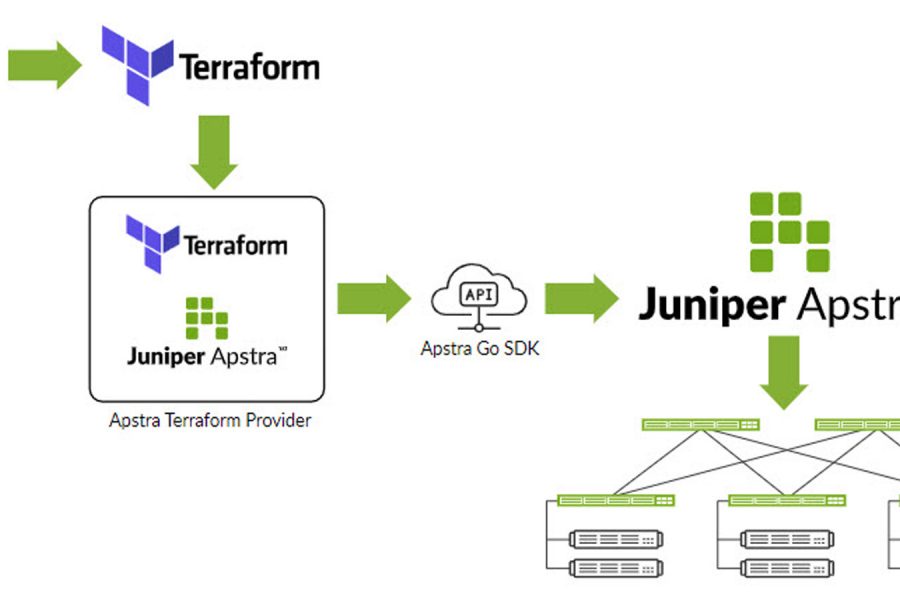Today marks a significant milestone for Juniper Networks’ data center business. With the close of the Apstra acquisition, we take a meaningful step toward delivering an experience-led portfolio for data center operators across all segments—enterprise, service provider and cloud provider. And while an announcement like this feels a bit like a new beginning, it is really a continuation of a years-long pursuit of driving meaningful change in the data center space.
From networks to networking
There are a lot of ways to define a strategy. Some people look to technologies as definitions (e.g., cloud native, DevOps, software-defined) – industry buzzwords that indicate some element of change, but somehow miss the mark. Others look to broader strategic thrusts like consumption models, “software is eating the world”, democratization, etc. These are useful quips, but inadequate punch lines to the full material changes. The big change in data center networking is somehow more subtle – and more important.
Where the past has been about building better networks, the future is about making networking better. Networks are nouns that are defined by the hardware, the software and the protocols. Networking is a verb that is defined by the people, the process and the tools. Historically, data center architects have had to solve for connectivity, whereas today’s change is around operations. Operations is no longer the final step that gets wrapped around a purchase; instead, it forms the core criterion for how design decisions are made.
From job-to-be-done to decision-to-be-made
Juniper is not the only company to latch onto operations as a key strategic focal point. Indeed, any credible player in the space needs to bring forth their answer for management. But for most of the industry, this represents an incremental approach to managing devices. The actual problem to solve goes well beyond having to type commands into too many devices.
If we get through a generational change – and all we do is change the point of interaction – we will have collectively failed. Operations is not about identifying a task and then executing it with fewer keystrokes. It is not about pushing a change; it is about understanding if that change ends up doing what you need it do. The actual effort is making a decision. If our systems and tools are oriented around the job-to-be-done and not the decision-to-be-made, we will see only incremental benefit.
From commands to intent
A natural outcome of thinking this way is to stop expressing what’s wanted in terms of device imperatives. Not only is it inefficient to have to map everything to highly contextual commands, but it is also not difference-making work. Teams should be well-versed in what they want to happen, not necessarily the syntax required to make it so.
The whole promise of intent-based networking — created by Apstra — is that operators can express what they want, for example, reachability, security, quality of experience or compliance — leveraging a system to translate that into what they need. Software can then automatically configure the network accordingly.
In shifting design and architecture to a focus on outcomes, the whole system can readily operate heterogenous environments. This frees networking teams from the burdens of technical debt with new ease in vendor-agnostic deployment and operations.
From automatable to self-driving
Even intent is merely a step toward something bigger. Moving to intent-based management is important – but what happens the moment you execute change, or something goes wrong?
Talking about operations over provisioning is necessary because there is so much more to it than just managing changes. Is the system working as designed? How do you create closed-loop assurance to identify issues, troubleshoot and, ultimately, remediate?
It’s more than talking about an API or a random automation component. To move beyond being automatable and make meaningful progress toward the self-driving network, a platform must be built that does so much more than merely translate a command into some backend API calls. A network state needs to be modeled, consistently checked against that state, rich telemetry collected and a means of doing something with all of that information to proactively alert when and why an issue may be brewing.
From connectivity to experience
As we work to integrate with Apstra, the conversation always starts with intent-based and management, but all of these other core tenets of data center transformation are why we are truly excited to close this deal. Apstra has not merely evolved a standard practice; they have offered up a new way of thinking about operations in its entirety. In doing so, they have built out a set of capabilities that our competition cannot come close to delivering.
From banks to public sector agencies to universities, transformation is relevant for every sector. With Apstra’s approach to intent-based fabric operations, companies and entities are shifting from connectivity to experience.
A final word
Delivering an experience-led data center portfolio requires rethinking operations. It starts with foundational elements—an underlay, an overlay and telemetry. It includes hardware and software, on-premises and in the cloud. It is anchored on standards-based protocols, but it does not come together without a platform capable of pulling people out of the weeds and into the business.
That is what it is all about, ultimately – focusing on the business, not the business of the infrastructure. With Apstra and Juniper together, that is precisely what we are doing.
Learn more
Join our upcoming Webinar: Reimagine DC Operations – The Automated Data Center to learn how closed-loop automation and assurance can help you transform your data center operations in your multivendor network environment.

























